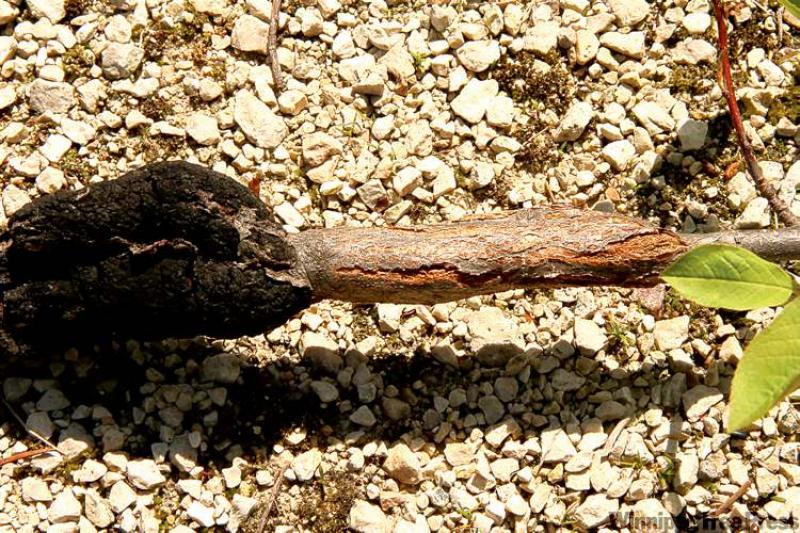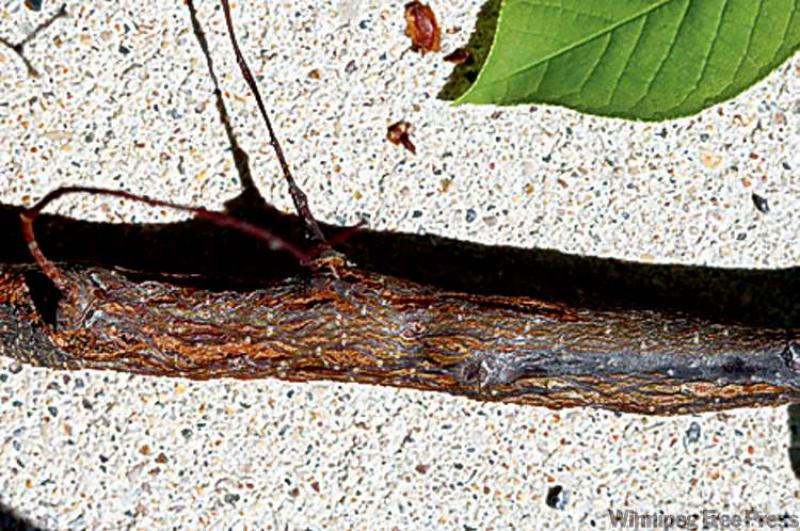
AT the recent Saturday Gardening Show organized by the Friends of Assiniboine Park Conservatory, I was approached by well over 50 people concerned about black knot disease on their Schubert choke cherry trees.
As many people have noticed, the disease is rampant all over southern Manitoba and the number-one question I get is what people can do about it.
The disease looks like a black mass of burnt rope, sometimes tinged with a grey or maroon colour. It's usually located on the branches, but not uncommonly in large, black blister-like openings on the trunk.
If the disease has been controlled by pruning over the years, then there's a good chance the tree will survive in future years. But there are thousands of trees with black knot infections that are well past the point of treatment.
Last fall, there was a surge of infections occurring late into October, with many black knots occurring after owners had pruned them off earlier in the fall. The knots were relatively small and ball-like in shape, with a small tail-like appendage attached to twigs.
In many areas in Winnipeg the disease is out of control. Many trees will have to be removed because the disease is in an advanced stage and has spread throughout all parts of the tree, including the roots.
Unfortunately, most people do not recognize the common early-spring infection signs of the disease, which needs to be removed immediately. These signs reveal brown (not black), linear, slightly swollen growths along the twigs or branches. This growth will become grey-brown and develop prominent linear groves along its mid-section as it swells.
If your tree does not have a lot of knots, here's what you should be doing. Prune off infected branches at least 30 cm (one foot) away from the disease towards the main trunk. If possible, prune off the branch at a junction with a larger branch or the trunk. After every cut, sterilize your pruning tool by carefully spraying with a disinfectant such as methyl hydrate or denatured alcohol. Always use protective breathing measures.
The pruning tool can also be dipped in a mixture of one part bleach to nine parts water. Be sure to thoroughly oil the tool after use to prevent rusting from the bleach. The disinfectant prevents reinfection by the pruning tool.
Cover the ends of cut branches with a tree-pruning seal or a tree wound seal compound if the cuts were made from early April to early October.
If the disease is in the trunk, there is really no effective way to get rid of it. Early signs are black spindle-shaped groves on the bark. Eventually, large open blisters show up. Sometimes the tree can live for many years with an infected trunk but eventually the disease will kill it.
Fertilize the tree with a suitable tree fertilizer such as 21-7-7, 20-20-20 or any other higher-nitrogen fertilizer in May or June.
Destroy all black knots and infected twigs or branches, or place them in sealed trash bags or containers. Trees with heavy annual black knot growth infections should be removed along with their stumps.
And finally, if you don't have a Schubert choke cherry tree, don't plant one.
Michael Allen is a consulting urban forester and certified I.S.A. arborist and owner of Viburnum Tree Experts. He makes house and garden visits to assess tree and shrub problems. He can be contacted by calling 831-6503 or by email at viburnumtrees@shaw.ca You can also mail questions to Michael Allen, c/o Newsroom, Winnipeg Free Press, 1355 Mountain Ave., Winnipeg, MB, R2X 3B6. Visit his website at www.treeexperts.mb.ca




